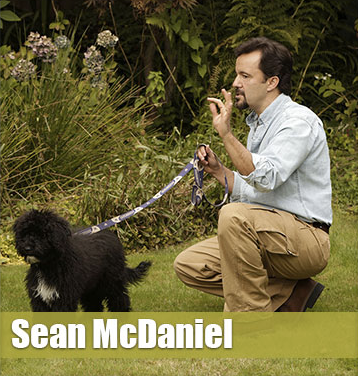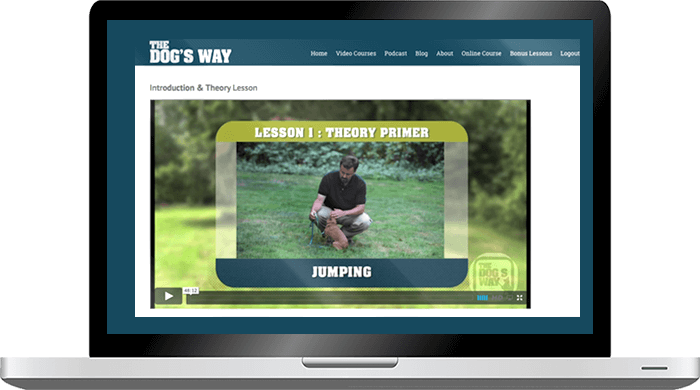House Breaking 201: Teaching Your Dog to “Ask” to Go Out

THE PREREQUISITE
First, read my “house breaking 101” article and follow those protocols for a few weeks. If you’ve done that, you’re probably ready to move on to finishing the house breaking process and teach you’re pup to “ask” to go outside every time. While it”s tempting to skip steps in the learning process, be sure that you”ve achieved the goals from the first phase before introducing these concepts to your pup. Frequently, skipping steps results in having accidents and that always makes the housebreaking timeline, seemingly, go on forever. You could be finished with all of these steps in just a few weeks, or you could be calling me with a two year old dog telling me that she”s “almost” completely housebroken.
Be sure you’ve met these goals:
- Consistently follow the schedule from “house breaking 101″
- No accidents during that entire time
- You’re pup may have already started indicating that they need to go out sometimes
THE GOAL OF THE NEXT PHASE
The goal of this next phase of house breaking puppies is to promote the idea of your pup letting you know that they need to go out. We’re pausing at a partially open door in this phase to motivate your puppy to “ask” to go outside. We’re using a partially open door to create the realization with the pup that they need your help in getting the door all the way open to get outside.
THIS IS AN ADD ON PROCEDURE (not a new ritual)
This “add on” idea is meant for when you’re spending “supervised” inside time with your puppy. You’ll need to have this supervised time occur where your puppy has access to the door out of which you’ve consistently been taking them to the bathroom area.
LET YOUR PUP SMELL THE OUTSIDE
The general idea is to keep the door, that you”ve been using in your training, cracked open slightly during this transitional training period. This door should be open enough that your pup can smell the outside without being able to get through the door by themselves. With sliding patio doors this is fairly easy. Simply pull the door open an inch or so. With regular swinging doors, the use of an old fashioned wedge-type stopper works well. Many clients have told me that another good option (that also offers some security if that’s an issue) is to use a security door chain on swinging doors, that allows the door to be cracked open, but doesn’t allow it to open all the way. Incidentally, clients who have also felt uncomfortable keeping their sliding doors cracked open, have told me they’ve installed security bolts (pictured to the right) in their sliders to allow this same “cracked open” effect, without the ability for anyone to open the door from the outside.
ENCOURAGE “GOING OUTSIDE” WHEN YOUR PUP SMELLS THE OUTSIDE AIR
Begin the “going outside ritual”(that you’ve been doing as a matter of schedule thus far) each time your pup begins to sniff the outside air through the crack in the open door. Begin asking, “Do you want to go outside?” as they sniff the partially open door. Pause there for a few seconds to a minute waiting for an affirmative signal from your pup. Some pups whine, some give out a little bark, some paw at the door. Also, keep in mind that you may need to prompt this process if you see your pup starting to move away from you inside the house and sniff the floor in a concentrated, intent way. After you”ve ushered them over to the partially open door, you should pause a moment while you wait for a signal from your pup that they want you to open the door. Have your leash handy to take your pup out so there”s no delay in ushering them outisde. Also, be sure that you don”t just let them head out on their own to explore the back yard and “maybe” go to the bathroom. Be sure to supervise these bathroom trips by having them on leash still.
BELLS
Many clients ask about using the hanging bells as a way a pup can let you know they need to go out. If you”ve chosen the hanging bells as your “notification technique”, the procedure is really, pretty much the same. Once you get to the partially open door, wait there until the pup”s sniffing jostles the bells. As soon as they make the bells ring, praise them, give them a treat and open the door. As a reminder, you should have these bells hanging throughout the entire phase one part of training so that they jingle every time you take your pup outside.
ENCOURAGE ONLY BATHROOM TRIPS OUTSIDE (do separate play trips outside now)
It’s crucial during this period of training to only do the “outside” ritual for bathroom trips. It’s a good rule of thumb to never mix “business with pleasure” as you move forward with housebreaking (in case that phrase isn’t obvious, I mean don’t take your pup out to the bathroom area and then play a lot in the same area at the same time now.) This is particularly important when you’re coaching this “ask to go out” skill. When they ask to “go outside”, make sure they understand that this is only to go to the bathroom. Go back inside after they’re done relieving themselves and then do a separate play session outside if that’s something you’re going to do.
HINT: when you’re going outside to play or go for a walk don’t use the same phrase “ Do you want to go ‘outside’?” OR whatever phrase you”re consistently using to announce “this is a bathroom trip!”
NOTE: It”s OK (and encouraged) to have your pup go to the bathroom outside while playing outside or going for a walk, the only point of explicitly separating the “bathroom” ritual from the play and walk rituals is to solidify the prompt “do you want to go outside” and the skill of “asking” to go out.
Hopefully that helps. Have fun with the next stage of this training – you”re almost there.
By the way, here are some articles on my blog you might also find useful:
Your Puppy”s first couple of weeks: Tips to make the transition easier
Best of luck with all your puppy training!

About the Author: Sean
I’ve been training people and dogs in Seattle for the last decade and a half. My main focus when working with clients every week in one-on-one, private lessons is to help people learn to get their dogs to a functional level so that they can actually enjoy spending time every day with their dog instead of stressing about their dog’s behavior issues.
4 Comments
Leave A Comment
You must be logged in to post a comment.
Affiliate Program
Make money by referring people to the video course!
. . . . .

About Sean
I’ve been training people and dogs in Seattle for the last decade and a half. My main focus when working with clients every week in one-on-one, private lessons is to help people learn to get their dogs to a functional level so that they can actually enjoy spending time every day with their dog instead of stressing about their dog’s behavior issues.
Ask Sean a question!
If we use your question in the show, Sean will send you a coupon code for free access to the online video course!
If you have a question you’d like me to respond to on the show (and you want to hear yourself on a future episode) leave me a voice mail! 1 (844) 364-7929 or email me here.


I wonder if you’ll see this! We have two problems with housetraining our 13 week old puppy:
1. Her potty area (which she’s been peeing\pooping on since we brought her home at 8 weeks old) is through the garage door, down 3 stairs and a few steps away through ANOTHER door to the potty area. She can’t walk down the stairs so I carry her to her spot. Plus, she’d pee anywhere that I put her down, at least first thing in the AM…
2. She’ll go pee in her outdoor spot when taken (carried) there, but has started pooping (and sometimes peeing) in a spot behind our couch. She doesn’t seem to need to go any predictable time after eating, so it’s rather hard to take her out to poop when she doesn’t need to.
We’ve had some people advising us against pee pads, but they might need to be our best option…
Any advice would be greatly appreciated.
When will my 15 week old puppy show interest on needing to go potty. I usually take her outside on a schedule or when I see sniffing around and doing strange behavior such as being super mouthy and biting.
How do I train my pup not to run outside.
Question: What do you suggest for people with a walk-out basement? We live on a hill and can only access the backyard through the basement door. Our puppy can’t climb the stairs yet. And even if she could, it’s a long way from the upstairs to the basement. Any suggestions?